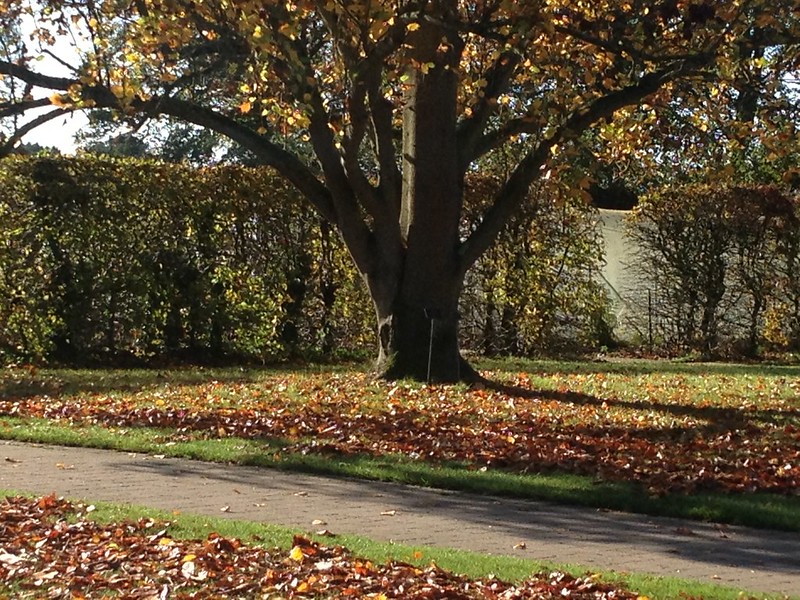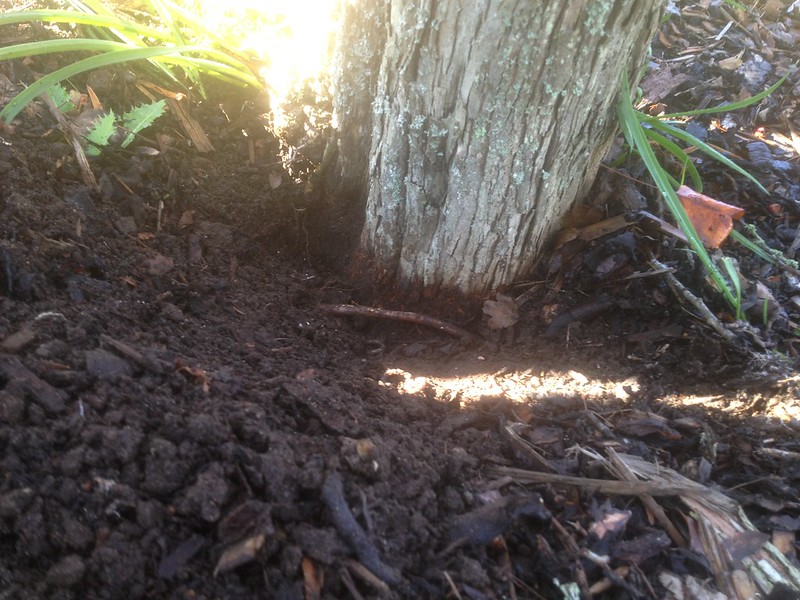"The best time to plant a tree is 20 years ago, the next best time is now"Growing a tree is a long term investment, often a conspicuous one, so you want to ensure it will thrive and perform its function in the garden by planting it in the appropriate way.
unknown
It is a fact of life that, while there are a range of different science-based ways of planting trees (as different techniques develop on what works best on a particular site and within particular conditions: the horticulturist's personal experience of translating into practice the applicable scientific principles in soil and plant science), not all techniques developed over time are equally good or even science-based.
No trademark is of course associated with an "RHS way", as it would contradict its ethos of sharing of horticultural best practice: information on techniques for planting trees are widely available in print, online (like this guide to buying good specimens or this well explained planting video) and through courses.
When participating in a tree planting masterclass today, as part of my learning process, I was mentally comparing "the RHS way" to what I was taughtlast year, when I was working in the Arboretum at Kew, planting trees, and - of course - being inducted into "the Kew way".
Choosing a plant carefully before buying is universally considered a best practice: last year I visited a specialist nursery for the first time with a professional horticulturist, and the way she selected plants surprised me: not only did she ask a lot of questions and look for healthy specimens, well grafted (if the case), with no signs of having been long in their pots and badly cared for (i.e. moss and weeds on the soil surface, suckering stems, roots sticking out or deforming the pot), she would actually be rather physical with the trees, touching them and shaking them gently out of their pots (they should come out easily with the soil attached, if the soil does not come out then the roots have not developed correctly, if the tree won't let go of the pot, it has been in there far too much, and if it comes out but with all roots running around the pot or even backwards towards the tree that is not good either).
While at Kew we did not disturb the rootball (probably because their own nursery trees are grown in airpots which train roots to develop outwards anyway), here (something that is probably closer to the average gardener's experience) rootballs needed to be, and were therefore teased out, before planting, preferably in the autumn, when the soil is still warm and roots can start establishing once they have shed their canopy.
 |
| Planting hole dug, surfaces forked, mound filled back in to place the tree on so the root flare is just above soil level |
On Kew instructions, I have previously dug large square holes and back-filled them before planting the tree, to avoid the roots getting bound in their pits; here, however, we achieved the same result by digging smaller, round holes (a minimum of three times the pot diameter), forking the bottom and sides, then planting the tree with its root spreading out on a little well-pressed mound of soil to take the root flare just above soil surface. That is to account for some initial sinking; incidentally no organic matter is used by either garden I've worked in, as it would rot and sink with the roots in it; besides, the roots would be too cosy in the hole with its added nutrients to make the effort to spread out and anchor properly into the soil.
 |
| A correctly planted tree will have its root flare above soil level |
The root flare is a very important part of the plant: the area where the trunk joins the roots, which spread out, it is a weak point in the tree that should be never planted below soil level. Bark, in fact, risks rotting and undermining the health and stability of the tree.
 |
| Tree planted too low, girdling root just visible |
I've seen the damage caused by low planting: in the best cases plants start to sucker, in the worst, roots girdle the tree or the bark dies back and the plant dies. So one should always find the root flare before planting a tree, if necessary freeing it of any soil accumulated over it in the pot.
As roots can grow bark if exposed, some prefer to plant higher rather then lower on the soil level, within reason. There are other considerations too: if trees are on a slope, soil will wash away from above it and might accumulate below it. In the garden there is also an oak whose root flare ended up 1 m below ground over the years, as part of natural land sliding.
Mycorrhizae - beneficial fungi that work in symbiosis with plants, providing them with some nutrients they dig out from the soil, while getting carbohydrates in return - are used in planting in both gardens, some scatter them in the planting hole, while we rubbed them on the roots for maximum contact.
 |
| Newly planted tree - staked, and watering bag |
Something that I had not had the opportunity to learn about previously was staking of trees.
Staking prevents windrock from disturbing the roots (sometimes it may even pull out the plant altogether) but it has to allow the stem to flex and bend in the wind, something that helps appropriate secondary thickening to take place, and with it healthy bark development.So stakes should be short, at a 45° angle into the wind (so the stem, bending in the wind, is not swept into it, but away from it, pushing the stake into the ground at the same time).
One inch between the tree and the stake allows the use of soft pads firmed with rubber or plastic canvas ties, to minimise chafing.
Tree guards may be needed to protect the tree from ringbarking and death, where rabbit and deer are active.
A doughnut shape of mulching completes the planting hole, which needs to be well watered: proprietary watering bags are used that can be left overnight to allow water to soak thoroughly and percolate throughout the hole.


No comments:
Post a Comment